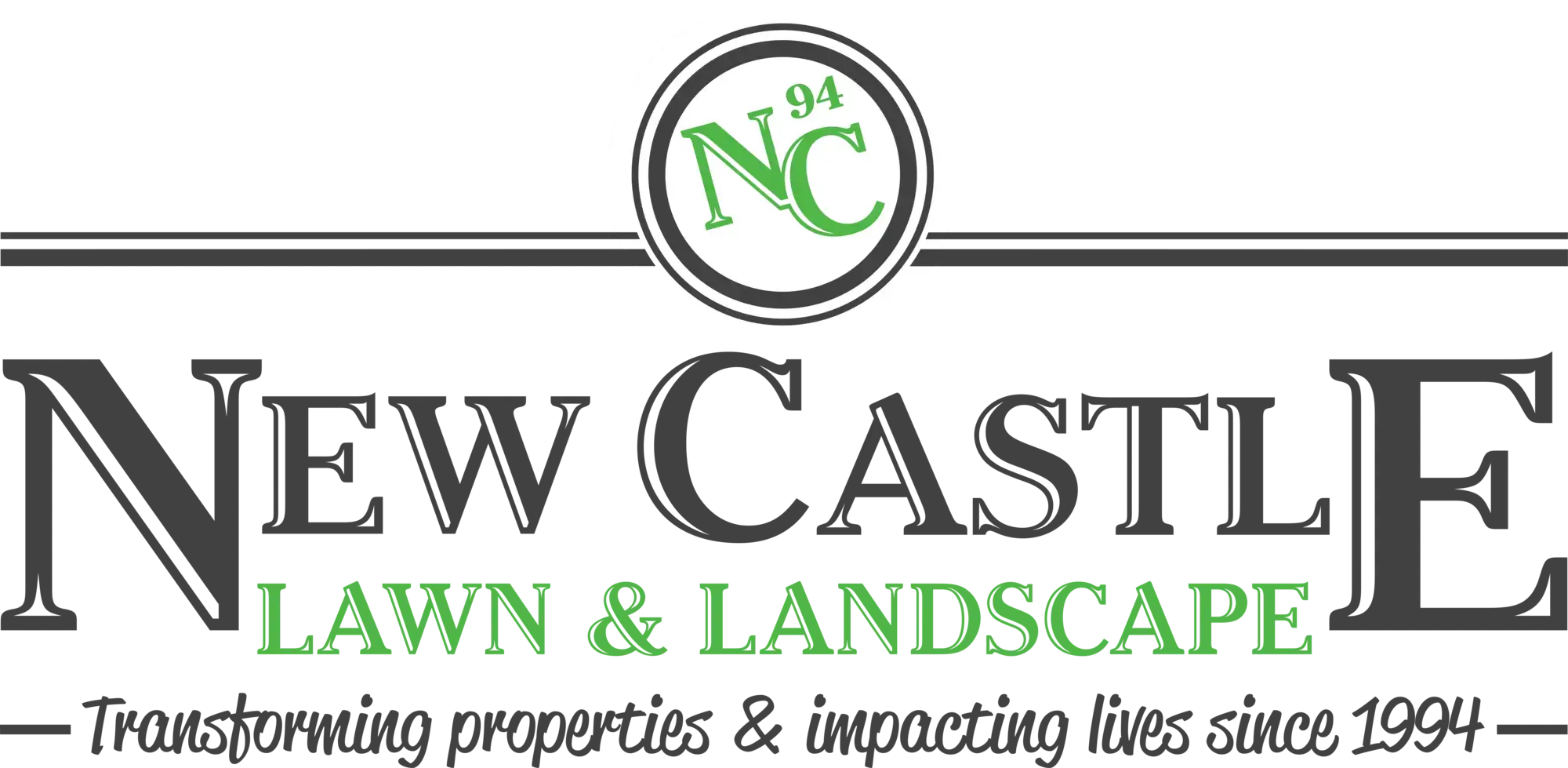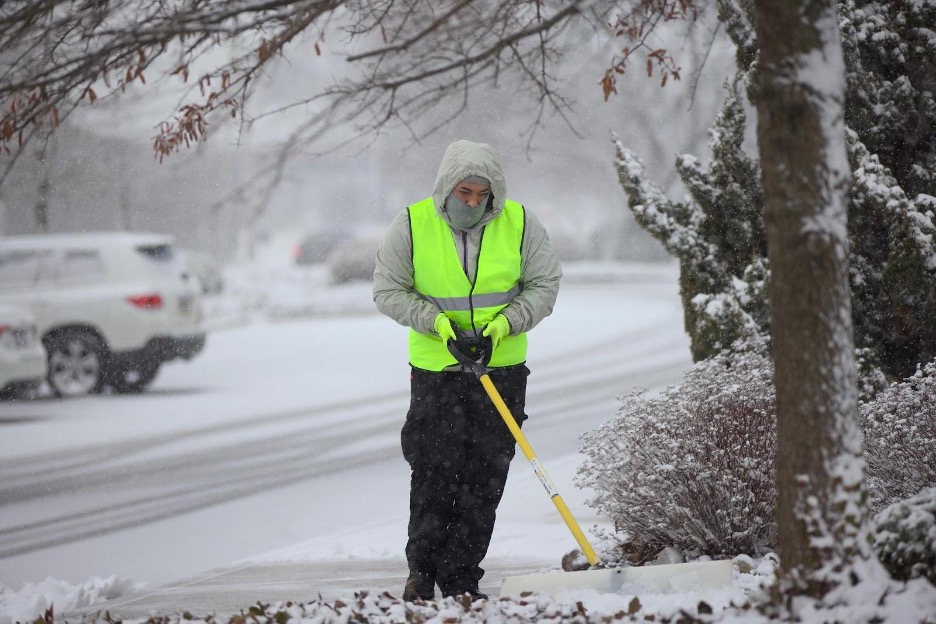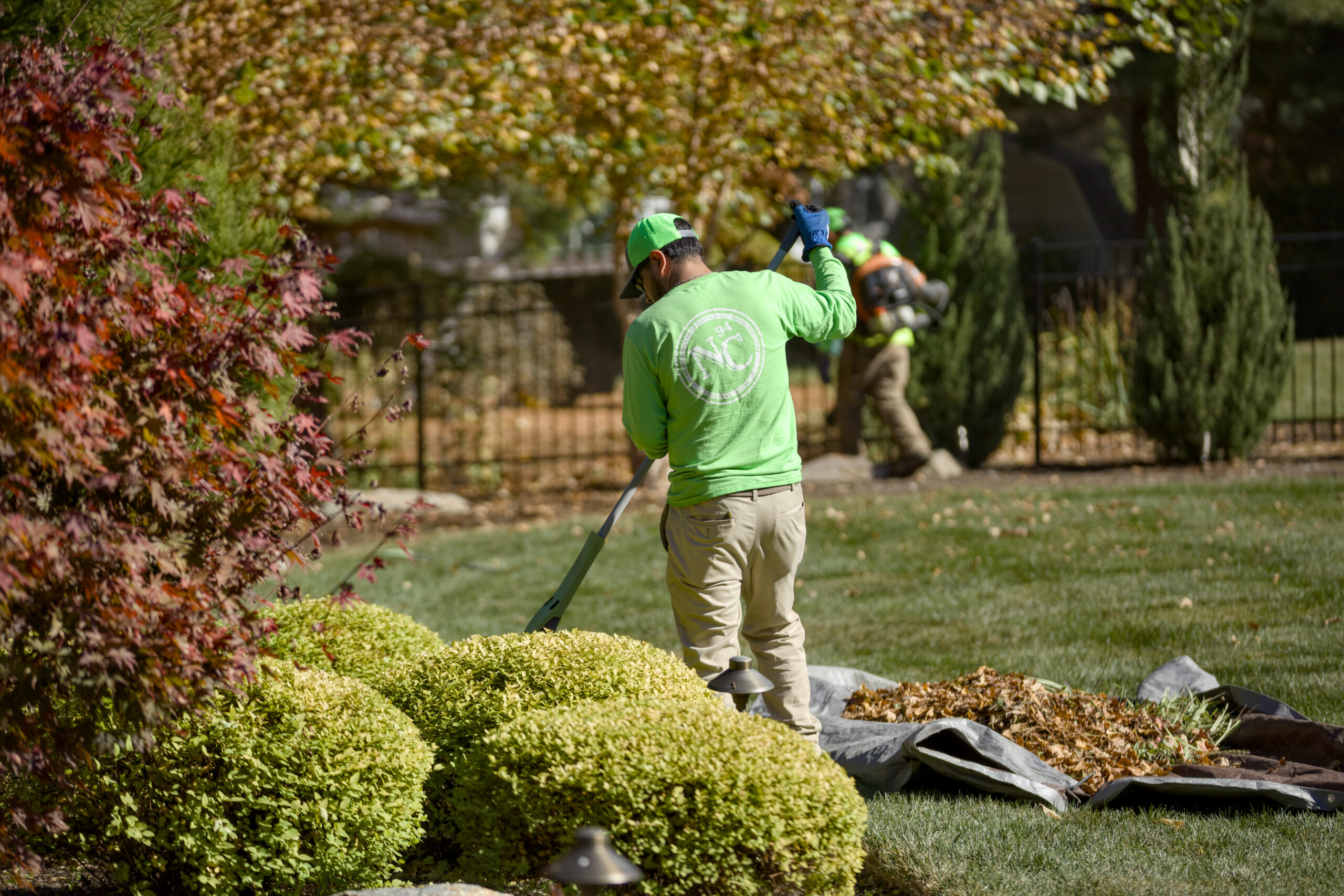Trees bring beauty, shade, and value to your property, and with the right care, they can thrive for decades. At New Castle Lawn & Landscape, our primary focus is on keeping your trees strong and healthy through professional pruning, tree injections, crown elevation, and seasonal maintenance. While tree removal is sometimes necessary, our goal is to help you avoid it whenever possible.
Table of Contents
ToggleWhy Tree Trimming and Maintenance Is Important
Trees that require regular trimming are one of the best ways to prevent emergency removals. For this reason, New Castle Lawn & Landscape offers tree trimming for Reading and the surrounding communities, ensuring every tree stays healthy, retains its role as a natural asset, and enhances your landscape’s appearance. Our team of tree trimmers is more than happy to complete the job, knowing the benefits that come with it include such things as:
- Shape the tree for aesthetic value
- Eliminates weak or dead branches
- Prevent overgrowth near foundations, roofs, and power lines
- Increase sunlight exposure to lawns and gardens
- Promotes a strong and sustainable structure
Preventive care isn’t just about appearance, it’s about safety, property protection, and long-term cost savings. For example, targeted tree injections can stop pests like emerald ash borers before they cause irreversible damage, while timely crown elevation keeps low branches from becoming hazards.
The recommended period for tree trimming is every one to three years, depending on the location and species of the trees. Regular inspections should be done each season. Nevertheless, our tree experts at New Castle Lawn & Landscape can perform these tasks and take the necessary actions if they catch a potential issue early enough.
Why Preventive Tree Care Matters and When Removal Becomes Necessary
Trees can thrive for decades with the right care. Through regular pruning, targeted tree injections, and crown maintenance, many structural or health issues can be avoided entirely. Preventive services not only enhance the beauty and safety of your property but also extend the life of your trees, reducing the likelihood of emergency situations.
Still, there are times when even the best-maintained trees face challenges that can’t be reversed. Large oaks, tall pines, and smaller ornamentals may outgrow their space or lose structural integrity, making removal the safest choice. Some common situations include:
- Severe disease or decay beyond treatment
- Significant storm damage or uprooting
- Leaning toward power lines or structures
- Root overgrowth is causing sidewalk or foundation damage
- Overcrowded landscapes
- Blocking views or essential sunlight
When prevention is no longer an option, professional removal ensures safety for homes and businesses in the Reading area. Acting quickly can prevent costly property damage, reduce liability, and restore peace of mind.
When Is The Best Time To Remove A Tree?
Knowing when a tree should be removed from your property is critical. That’s why it may be a good idea to inspect trees that may be a cause for concern. These telltale signs below are excellent indicators of when a tree should be removed now rather than never:
- Dead or dying branches: If there are large dead limbs, especially high in the canopy, this can pose a safety risk. This is a surefire sign of internal decay that may be affecting other parts of the tree.
- Cracks in the trunk: If you notice any splits, vertical cracks, or hollow sections, these are obvious signs of structural instability and can get worse over time or be accelerated due to environmental conditions such as weather.
- Fungus at the base: Do you see any fungal growth or mushrooms at the tree’s base or close to the roots? These are signs that interior decay is happening, as well as root rot. Meaning the tree is suffering and could get worse over time as it’s being deprived of the necessary nutrients to support its life.
- Leaning trees: If a tree is suddenly leaning or has a significant lean to it, it’s an indicator that the root system has been compromised. It may be leaning toward powerlines or structures that can get damaged if the tree is not carefully removed as soon as possible. A tree can fall and cause downed power lines, which are dangerous safety hazards themselves. Or it can cause significant property damage if it falls onto a home.
- Insect infestation: Severe pest infestations like carpenter ants, beetles, or termites can indicate that a tree can no longer be salvaged. If close to a property, it may also threaten to invade a home or business, especially if no pest management measures are in place.
These signs indicate that you should contact a tree service near Reading as soon as possible. This can result in a tree being removed safely if the conditions indicate it.
What Should You Expect During The Tree Removal Process?
Removing a tree is not as straightforward as you think. It can be a complex process that utilizes special equipment and highly trained professionals, such as ours at New Castle Lawn & Landscape. Our tree removal for Reading and nearby communities follows a process that we’ve done numerous times. Here’s what you should expect:
Step 1: On-site evaluation
To begin, our tree specialists (or arborists) inspect the tree in question. They evaluate the risks and decide if removal is the best course of action. This includes assessing some of the following:
- Size and health of the tree
- Accessibility for equipment
- Proximity to power lines or structures
- Local regulations or permits that may apply
Step 2: Safety planning
Safety should never be overlooked in any tree removal process. To ensure that your home, property, and surrounding structure are protected accordingly, New Castle Lawn & Landscape will make a plan to meticulously and safely remove the affected tree.
Step 3: Tree cutting and limb removal
The tree removal crew performs precise cutting and removal using the proper equipment, such as ropes, saws, and rigging systems. Top-quality tree cutting for Reading and the surrounding area requires specialized equipment tailored to each tree removal task, whether it involves removing branches, trunk sections, or more.
Step 4: Cleanup and disposal
After removing the tree, the work isn’t finished. One thing we know about landscaping and caring for property is respect. That’s why our crews make sure every area is thoroughly cleaned after tree removal. This includes clearing debris, hauling away logs, branches, and scraps, and double-checking to ensure nothing is left behind before calling the job complete.
As you can see, the process involves meticulous tasks at each step. New Castle Lawn & Landscape understands that every tree removal must be done with a careful, well-planned approach. At the same time, we perform each task with professionalism, safety, and respect for your property and your neighbors.
Stump Removal vs Stump Grinding: What To Know About Both Services
If the stump of a tree is left behind, it can still be a significant problem. Not only could it be a safety issue, but it’s also one of the best harboring spots for numerous pests and fungi. For this reason, trump grinding and removal for Reading property owners is available upon request. But what is the difference between the two services? Let’s take a look at the following comparison chart:
| Service | Stump Grinding | Stump Removal |
| Method | Grinds the stump down to below soil level | Uproots entire stump and roots |
| Speed | Fast and efficient | More labor-intensive |
| Yard Disruption | Minimal impact | Excavation may be required |
| Best For | Lawns, gardens, or future landscaping | Construction, paving, or total replanting |
Frequently Asked Questions (FAQs)
New Castle Lawn & Landscape has worked with numerous property owners to help them with tree removal services. We often get asked plenty of questions about our services and what we do specifically. Here’s what those questions are:
Is a permit required for tree removal in Reading?
Permit requirements may be possible depending on factors like the location of your property and zoning. A permit may be required if the tree in question is on public land, part of a conservation area, or a historic tree.
Can homeowners’ insurance cover tree removal services?
Tree removal may be covered under your homeowner’s insurance if the policy does indeed cover it. The major caveat is that it has to meet certain conditions, such as whether it fell during a storm or if it caused damage to a covered structure. It won’t cover tree removal if the tree fell without causing damage or if the tree was diseased, dead, or not properly maintained. If in doubt, you can contact your insurance provider to double-check.
Final Thoughts
Whether your trees need a seasonal trim, a health-boosting injection, or a careful evaluation after a storm, our team focuses on keeping them healthy and beautiful for years to come and only recommends removal when necessary.








